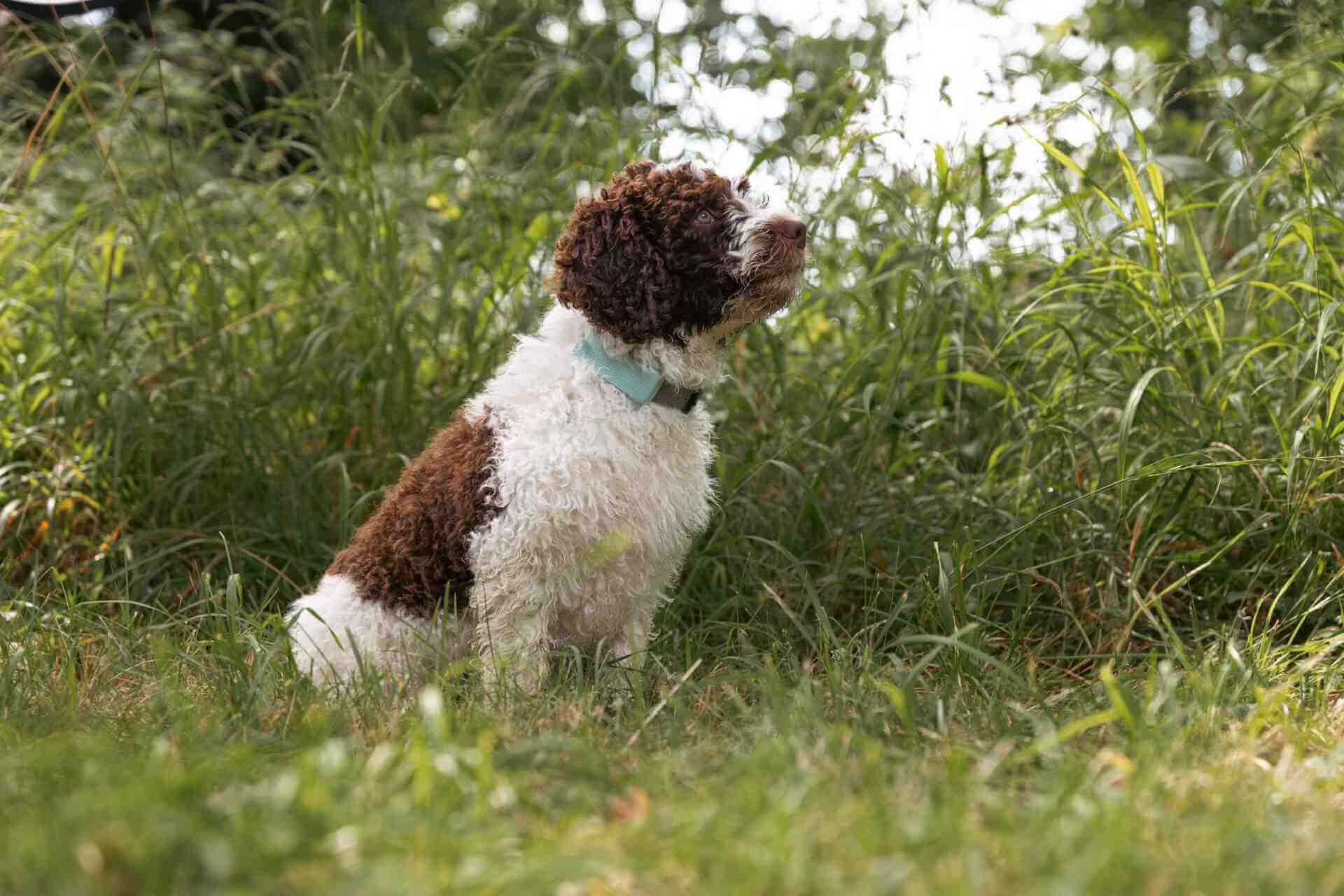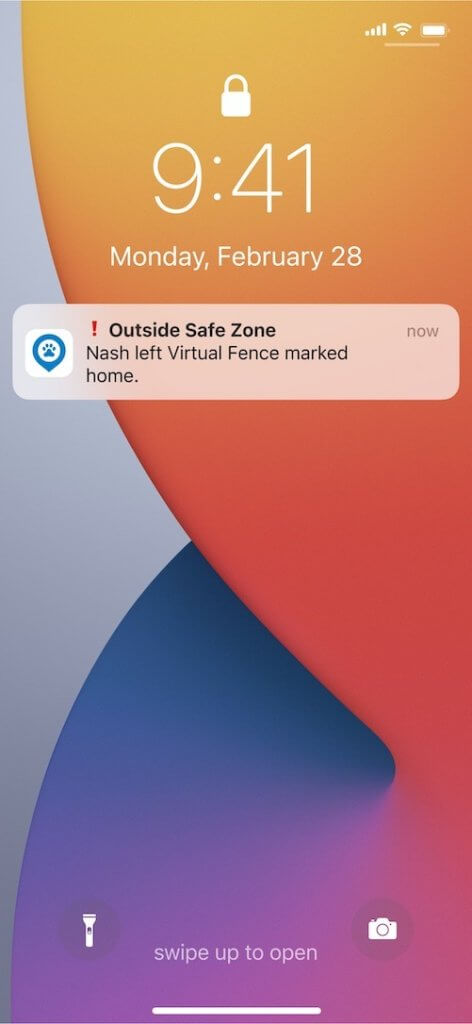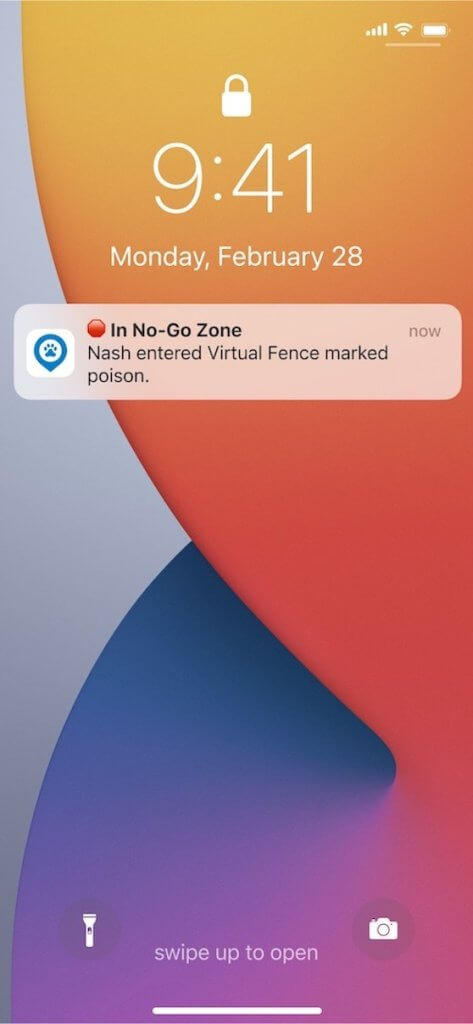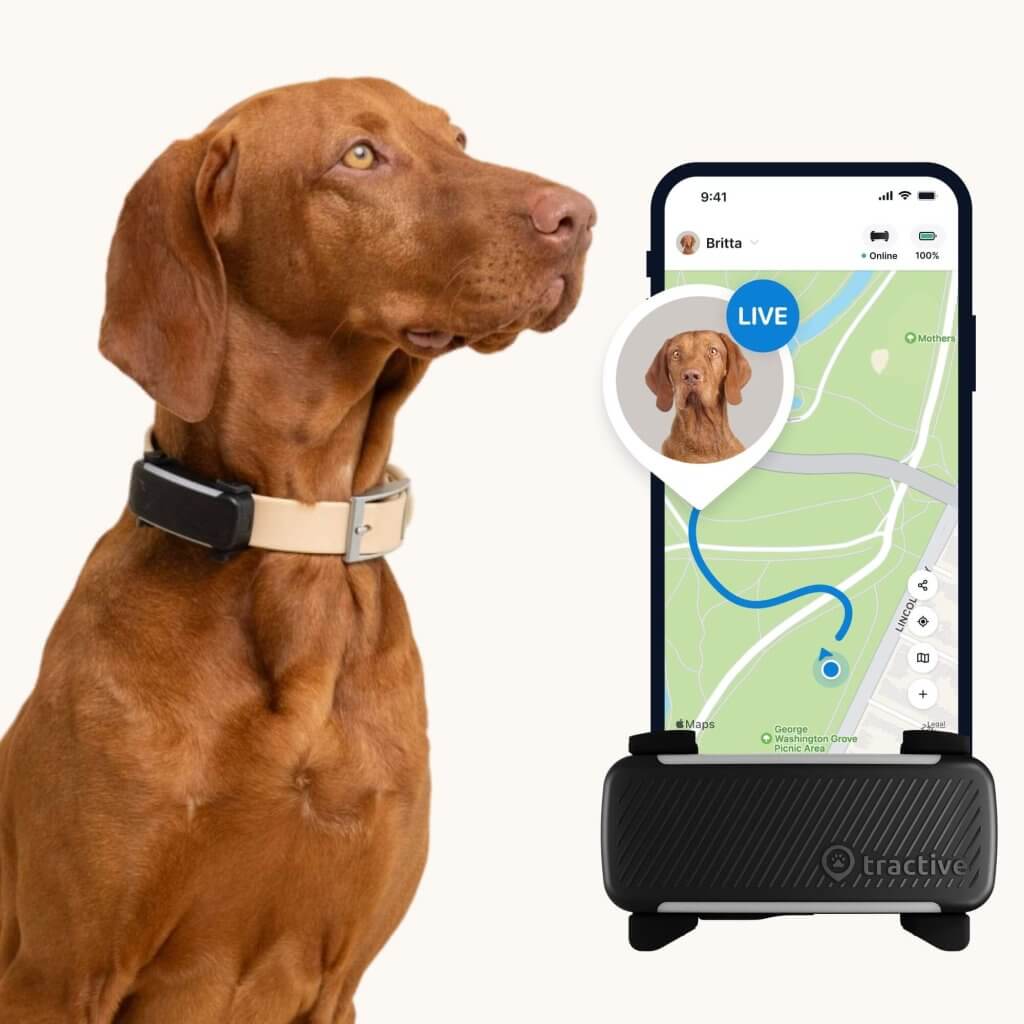New Puppy Checklist: How To Take Care Of A Puppy 101
A new puppy requires a lot of love, work, patience and care. Here's all you need to welcome your new canine friend home and get off to a great start together.
Bringing a new puppy home is one of life’s greatest joys. It’s also a big responsibility! Here’s a comprehensive new puppy checklist to help you prepare your home and a detailed guide on how to take care of a puppy to ensure your new companion thrives. (Including how to find them in no time if they go missing.)
Key Takeaways
Preparation is key
Gather essential gear like a collar, leash, and bowls, and puppy-proof your home with gates to create a safe environment.
Establish a routine
Consistency is crucial for house training and feeding. Take your puppy out frequently and stick to a regular feeding schedule to make daily care easier.
Invest in training and health
Use positive reinforcement for training, provide mental stimulation with playtime, and stay on top of regular vet visits and grooming.
Prioritize safety
Microchipping is vital, but a smart dog tracker like the Tractive device offers real-time GPS tracking and virtual fences to prevent your puppy from getting lost.

Always know your buddy is healthy & safe
Read morePre-puppy preparation & home setup
Before you bring your furry friend home, setting up a safe and welcoming environment is crucial. So first things first:
Find a vet
Look up the local vets around you and schedule your puppy’s first visit. This initial check-up is essential for setting a vaccination schedule and establishing a trusted partner in your puppy’s lifelong health.
Gather the essential gear
- Collar, leash, and harness
Start with a comfortable, lightweight collar that holds an ID tag with your contact information. For walks, use a padded harness to prevent strain on your puppy’s neck if they pull. - Food and water bowls
Choose heavy, easy-to-clean stainless steel bowls that won’t tip over. Wash them daily to keep them clean. - A cozy bed or crate
A crate with some blankets can serve as a safe den and is a vital tool for house training. Place the bed or crate in a family area, like the living room, so your puppy feels included.
Stock up on supplies
- Puppy food
Choose a high-quality puppy food that is specially formulated for growth and development. Your vet can best advise you on what to pick. - Treats
Keep a supply of healthy, small treats on hand for training sessions. - Chew toys
Puppies love to chew. Provide plenty of appropriate chew toys to redirect their attention away from your shoes and furniture. - Potty pads
These are highly absorbent and can be a great help during the initial stages of house training, especially for apartments or for overnight use.
Puppy-proof your home
Keep your pup from getting into trouble by using dog gates to keep parts of your home off-limits. You can use them to block entry into rooms with carpet, for example, which may be harder to clean up in case of an accident. Dog gates can also keep your puppy away from problem areas such as stairs or a frequently-used doorway that leads to the outdoors. This also helps to prevent your puppy from running away.
Daily care, feeding & house-training
Consistency is key to a happy and well-adjusted puppy. Here are some steps for the routine care that will become a part of your daily life.
Feeding your puppy
Puppies need to eat more frequently than adult dogs. Follow the guidelines on the puppy food bag, typically feeding them 3-4 times a day on a consistent schedule. This consistency helps with digestion and potty training. Remember to use treats for training rewards only, not as a meal replacement.
Read More: How Much Should I Feed My Dog? (And How Often?)
House training a puppy
House training needs a ton of patience – but it’s worth it. Take your puppy out for potty breaks every 1-2 hours. Always take them out after they wake up, eat, drink, or play. When your puppy does their business outside, praise them right away and give them a small treat to create a positive association.
At the same time, remember that accidents are inevitable. Keep a pet-safe stain and odor remover on hand to clean up messes immediately. This prevents your puppy from returning to the same spot.
Puppy training & play
Training a puppy is about positive reinforcement and building a bond. Start with basic commands like “Sit,” “Stay,” and “Come back,” using treats and verbal praise. Focus on rewarding good behavior rather than punishing mistakes. This builds trust and confidence.
Fun training activities
- The “Look at Me” game
Hold a treat to your nose and say “Look at me!” As soon as your puppy makes eye contact, give them the treat. This teaches them to focus on you, which is essential for all future training. - Touch training
Hold your hand out and say “Touch!” When your puppy’s nose touches your palm, give them a treat and praise. This is a great way to build confidence and is a foundation for more advanced tricks. - Name recognition
Say your puppy’s name and when they turn to look at you, give them a treat. Repeat this frequently throughout the day to help them learn their name quickly.
Read More: Dog Recall: How To Teach Your Dog To Come When Called
Playtime activities
Play is a vital part of a puppy’s development. It helps them burn off energy, learn social cues, and strengthens your bond. Here are some simple games you could try:
- Tug-of-War
This classic game is great for burning energy. Use a soft toy and let your puppy win sometimes to build their confidence. - Find the treat
Hide treats around the room and let your puppy use their nose to find them. This is a simple but engaging game that provides mental stimulation. - Short fetch sessions
Use a soft ball or toy and teach your puppy to bring it back. Keep the sessions short to maintain their attention and end on a positive note.
Read More: How To Tire Out A Puppy – And Keep Them Safe
Grooming & health care
Puppy grooming basics
Get your puppy used to grooming tools early. This will make it easier for them to settle into it in the long run.
- Brushing
Brush your puppy’s coat regularly, especially if they have a long or double coat. Start with short, positive sessions and reward them when they behave. - Nail trimming
Use clippers designed for dogs. Trim only the very tip of the nail. Avoid the pink area known as the quick, as it will bleed if cut. - Bathing
Use a puppy-specific shampoo and conditioner. A bath every few weeks is generally sufficient, unless they get into something particularly messy. Rub your puppy’s fur gently, and rinse thoroughly. After rinsing off the puppy shampoo, apply a conditioner made especially for dogs. This will help protect the skin from drying out. - Grooming wipes
These can be an alternative to giving your puppy a bath too often. These disposable wipes can be used to remove dirt from your puppy’s paws, clean up his bottom, and wipe down a muddy belly. - Dog dental products
Getting your dog used to getting their teeth brushed twice a day can help prevent harmful dental diseases over time. You could use a dog-friendly toothbrush or even add an oral solution to their water bowls for clean breath.
Health and safety
- Microchipping
Your vet can insert a tiny microchip under your puppy’s skin. This chip is linked to your contact information, providing a permanent form of ID if your puppy ever gets lost. - Pet insurance
Which can offset some of the cost for annual checkups, vaccinations, and potential emergency clinic visits. Much like for us, pet insurance has deductibles and monthly premiums. In many cases, the monthly cost is worth the peace of mind you get from knowing that your new puppy can get the care it needs.
How to take care of a puppy FAQs
What is the rule of 3 for a new puppy?
The Rule of 3 is a guideline to help new owners understand the adjustment period a puppy goes through. It’s broken down into three phases:
- The first 3 days
The first 72 hours are often a period of overwhelm. Your puppy might be scared, refuse to eat, or hide. It’s a time for letting them decompress and get used to their new environment. - The first 3 weeks
By this point, your puppy is starting to feel more comfortable in their new home. They’ve learned your routine and are settling in. You’ll see more of their true personality. - The first 3 months
This is when your puppy is fully integrated into your family. They’ve built trust with you, feel safe, and consider your house their home.
What is the 2:1 rule for puppies?
In general, for every 1 hour of supervised time outside of the crate (like training, walks, and playtime), your puppy should have around 2 hours of rest in the crate. This helps prevent them from becoming overtired and cranky, which can lead to destructive behavior. Puppies need a ton of sleep to grow – often clocking in 18-20 hours per day! As they reach 6 months, this tends to reduce to around 12-14 hours per day.
How often should I potty train an 8-week puppy?
An 8-week-old puppy has a very small bladder and needs frequent potty breaks. A general rule of thumb is that a puppy can hold it for roughly the number of hours equal to their age in months. For an 8-week-old puppy (2 months), this means taking them out every 2 hours during the day. This schedule should also include taking them out immediately after waking up, eating, or playing.
Read More: How To Nail Puppy Potty Training Like A Pro
What is the 5-minute rule for puppies?
This is a general guideline for how much exercise a puppy should get. The rule states that a puppy should get 5 minutes of formal exercise for every month of their age, twice a day. This is to protect their still-developing bones and joints from potential damage from over-exertion.
For example, a 3-month-old puppy would need around 15 minutes of exercise (3 months x 5 minutes), two times a day.
This applies to vigorous activities like walks and running. Free play in a secure yard is great and doesn’t have to follow this rule. But of course, keep a close eye on your puppy for signs of tiredness.
Our final tip: Keeping your puppy safe outdoors
Puppies are curious and unpredictable – and prone to getting lost. They can bolt out a door you’ve accidentally left ajar or get spooked by a loud noise and slip their leash. Because they’re still learning about their new environment, they can easily get disoriented and wander far away from home without a good sense of direction. This is why a great way to keep your puppy safe and prevent them from getting lost is by using a smart dog tracker.

Strapped to your puppy’s collar, your trusty Tractive device comes with:
- Real-time GPS tracking
See your puppy’s exact location on a map in real time – with just a glance at your phone. Besides, unlike an AirTag, Tractive trackers don’t need a network of compatible devices to work. They also work across an unlimited range. - Virtual fences
You can set up a “safe zone” on the map, like your backyard, from your mobile app. If your puppy leaves this area, you’ll get an instant escape alert on your phone.


- Light & Sound tracking
If you’re searching for your puppy in the dark or in a dense area, you can activate the tracker’s light or sound features to help you find them more easily. - Short-range Bluetooth tracking
If your puppy’s hiding somewhere indoors (like under a bed), you can switch to your tracker’s short-range Bluetooth tracking instead. This helps you track them down in areas where GPS can’t help.

Follow your dog anywhere
Get real-time location information, wherever they go. And find out when they try to make an escape, or just when they go somewhere they shouldn’t, with Virtual Fences.
Ready to skip the puppy blues for good?
Puppies can be fun, entertaining, loving, a tiny bit stressful, and outright adorable. But they aren’t like that for long. With this new puppy checklist and guide on how to take care of a puppy, you’ll be better prepare to enjoy every part of your new role. (Yes, even the messes and chewed-up shoes.) Before you know it, your little buddy will be a full-grown adult dog!
And if you’ve liked this post, share it with a friend or a loved one – and let’s help build a safer, kinder world for our furry friends together. We wish you all the best with your new furry pal!



